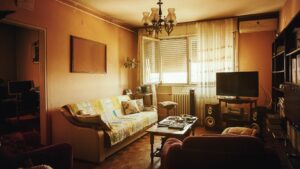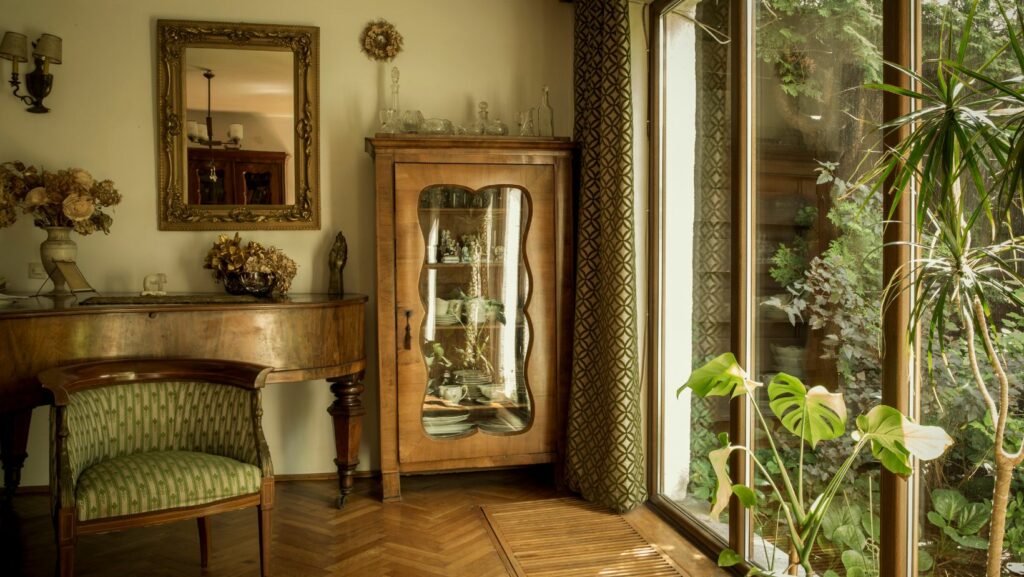1980s Interior Design
In 1980s interior design, bold colors and patterns reigned supreme to create a vibrant and energetic atmosphere. Spaces were often adorned with hues like electric blue, neon pink, and vivid purple, evoking a sense of flamboyance and opulence. Geometric patterns, such as chevron and zebra prints, were prevalent in upholstery, wallpaper, and textiles, adding a touch of dynamism to rooms. The interplay of these colors and patterns reflected the era’s adventurous and unapologetic approach to design.
The 1980s witnessed a significant high-tech influence on interior design, as the decade embraced futuristic aesthetics and technology. Furniture designs featured sleek lines, metallic finishes, and innovative materials like chrome and glass. Space-age elements such as mirrored surfaces, neon lighting, and geometric shapes became staples in interiors, infusing spaces with a sense of modernity and sophistication. The integration of technology, like early home computers and innovative electronic gadgets, further emphasized the era’s fascination with the future and cutting-edge design concepts.
Memphis Group Explosion

The Memphis Group, founded by Ettore Sottsass in 1981, revolutionized the design world with its postmodern and unconventional approach. Influenced by Art Deco, Pop Art, and Kitsch, the group’s designs featured bold colors, geometric shapes, and asymmetrical patterns. Their furniture pieces, such as the iconic Carlton room divider and Casablanca cabinet, embodied a playful and eclectic style that defied traditional design norms. The Memphis Group’s influence extended beyond furniture to textiles, ceramics, and lighting, leaving a lasting impact on the world of interior design.
The Works of Ettore Sottsass
Ettore Sottsass, the mastermind behind the Memphis Group, was a prominent figure in 1980s design. His visionary creations blended art and functionality, pushing boundaries and challenging perceptions of what design could be. Sottsass’s iconic work includes the legendary “Valentine” typewriter for Olivetti, known for its bold red color and sleek, contemporary design. His architectural achievements, such as the iconic Carlton bookcase and Mandarin Oriental Hotel in Singapore, showcase his innovative use of color, form, and material. Ettore Sottsass’s avant-garde approach continues to inspire designers worldwide, making him a true pioneer of 1980s interior design.
Integrating Vintage with Contemporary
In modern living spaces, integrating vintage elements from the 1980s interior design can create a unique and nostalgic ambiance. Designers often blend iconic pieces from the era, such as geometric patterns, bold colors, and futuristic furniture styles, with contemporary decor to achieve a harmonious balance between the past and the present. By incorporating elements like neon lighting, mirrored surfaces, and metallic finishes alongside modern minimalist designs, homeowners can infuse their spaces with a touch of retro charm while maintaining a sleek and up-to-date look.
Revival Trends in Today’s Interior Design

The revival of 1980s interior design trends in today’s interior design scene showcases a renewed interest in the bold and daring aesthetics of that era. From geometric patterns to vibrant color schemes, designers are revisiting the flamboyant style of the 80s and giving it a modern twist. Contemporary spaces now feature nods to the past with the resurgence of iconic design elements like zebra prints, chevron patterns, and bold hues like electric blue and neon pink. By incorporating these nostalgic touches into current interior design schemes, homeowners can embrace a playful retro vibe while staying on-trend with the latest decor movements.
How to Achieve the 1980s Aesthetic in Your Home
Key Furniture Pieces and Accessories
To achieve the 1980s aesthetic in your home, consider incorporating key furniture pieces and accessories that reflect the bold and vibrant style of the era. Opt for furniture with geometric shapes and sleek lines, reminiscent of the Memphis Group’s iconic designs. Look for statement pieces in bright colors like electric blue, neon pink, and vibrant red to add a pop of retro flair to your space. Additionally, consider adding accessories such as geometric patterned rugs, mirrored accents, and metallic finishes to capture the essence of 1980s interior design.
DIY Tips for a 1980s Vibe
For those looking to infuse their home with a touch of 1980s nostalgia through DIY projects, there are several simple and cost-effective tips to consider. Start by updating your existing furniture with bold colors or geometric patterns using paint or adhesive wallpapers. Experiment with creating your own retro-inspired artwork or wall decals to adorn your walls. Incorporate neon accents through lighting fixtures or accessories to channel the vibrant spirit of the 1980s. Embrace the era’s love for shiny surfaces by adding mirrored finishes to furniture or decor elements for a touch of glamour. By incorporating these DIY tips, you can easily bring the 1980s aesthetic into your home and create a stylish retro retreat.
